Faculty Research Interests
Analytical Chemistry
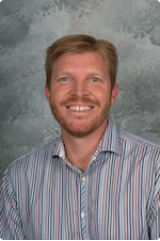
Jeremy D. Driskell
Professor, Analytical Chemistry
B.S. 2001, Truman State University; Ph.D. 2006, Iowa State University
Research in the Driskell group focuses on the development of novel diagnostic and biological assays by integrating surface chemistry, nanomaterials, and biology. Our laboratory aims to exploit the optical properties of gold nanoparticles (AuNPs) to develop biosensing platforms with an emphasis on surface-enhanced Raman spectroscopy (SERS) for detection. Work includes both applied research to develop innovative bioanalytical tools, as well as fundamental research to gain insight into the interactions of proteins with AuNPs to maximize the stability and biological activity of protein-AuNP conjugates.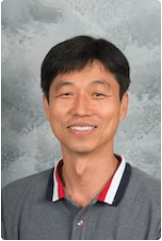
Jun-Hyun Kim
Professor, Analytical/Nanomaterials
B.S. 1995 and M.S. 2000, Keimyung University; Ph.D. 2005, University of Houston
The research interests in the Kim group involve the development of structurally diverse nano/micro-scale metals, polymers, and their composites for various applications: catalytic systems, signal-enhancing sensors, and delivery carriers. In the area of catalysis, we are interested in the systematical synthesis of various plasmonic nanoparticles possessing tunable absorption properties and the examination of their photothermal heating efficiency as well as catalytic chemical reactions upon irradiation of a light source. In the area of sensors, we have been working on the structural regulation of plasmonic metal nanoparticles on paper-based substrates for rapid, sensitive, and quantitative detection of biomarkers and illicit drugs. In the area of delivery systems, we are developing external stimuli-responsive smart vehicles, which consist of metal nanoparticles possessing a strong optical property and pH/temperature-sensitive polymer particles containing a high dose of drug molecules, for controlled delivery and release to minimize side effects.
Christopher Mulligan
Professor, Analytical Chemistry
B.S. 2003, Northern Illinois University; Ph.D. 2008, Purdue University
Research in the Mulligan group is focused on developing rapid chemical detection methods using mass spectrometry for areas of public safety. We design and create “ambient” ionization techniques that can directly detect chemical species from samples of interest in their native environment. These novel ionization methods can be coupled with portable mass spectrometric instruments to allow on-site chemical analysis in an on-demand fashion. Rapid prototyping methods (e.g., 3D printing) and novel, polymeric materials are employed in our instrumentation development. Application areas of interest include environmental science/stewardship, forensic evidence analysis, homeland security, and quality control. The long-term goal of this research is to provide field researchers and the first-response communities with high performance, yet simple-to-use, methods for identifying and tracking harmful chemicals and emerging threats at the point of interest.
Biochemistry
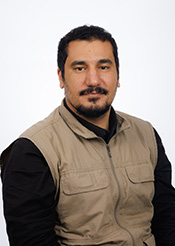
Mohamed Eldeeb
Assistant Professor, Biochemistry
B.S. 2009, Cairo University; Ph.D. 2017, University of Alberta
Research in my group aspires to discover and mechanistically understand signaling molecules that regulate protein degradation, mitochondrial degradation and cell death decisions in response to stress signals. Our group asks fundamental questions about the journey of proteins – how do proteins live and die, and how do these processes affect the cell life and death decisions? Our work uses a combination of biochemical, molecular, cellular and genetic approaches to try to answer these questions. Our discoveries help create a better molecular understanding of neurodegenerative diseases and other aging-associated disorders.
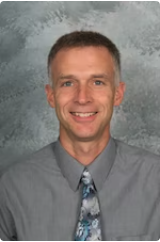
Jon A. Friesen
Professor, Biochemistry
B.A. 1991, Bluffton University; Ph.D. 1996, Purdue University
Research in the Friesen lab focuses on enzymes involved in biosynthesis of phosphatidylcholine. Recombinant DNA technology is utilized to produce the enzymes choline kinase and CTP: phosphocholine cytidylyltransferase. Following purification, enzyme kinetic studies are conducted to elucidate the mechanism of catalysis.
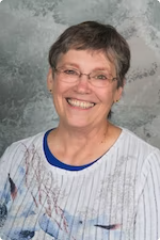
Marjorie A. Jones
Professor, Biochemistry
B.S. 1970, Central Michigan University; Ph.D. 1982, University of Texas; Health Science Center at San Antonio
Leishmania parasitic protozoans infect more than 20-25 million people worldwide and some 350 million people are at risk since they live in areas where Leishmania are human pathogens. Such diseases can be expressed as skin infections, infections in the mucus membranes of mouth and throat, as well as infections in the internal organs. There are very few good therapies currently being used to treat human Leishmania diseases in part because the treatments are expensive, have severe side effects, and drug resistance is also developing. Thus a major area of research in the Jones Lab is the use of unique compounds as potential cytotoxic agents for Leishmania diseases and we test various compounds for their ability to affect the growth of these protozoans in culture. Using a non-human-pathogenic Leishmania tarentolae model system, microscopic changes in cell shape, size, and motility as well as analysis for cell viability are done following addition of compounds at various concentrations. We are working to determine the mechanism of cytotoxicity of the effective compounds by analyzing proteins, enzymes, and lipids affected. The long term goal is to develop these various classes of materials as selective pharmaceutical drugs to treat human Leishmania diseases.
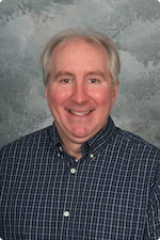
Steven J. Peters
Professor, Biochemistry/Physical/Organic Chemistry
B.S. 1989 and M.S. 1990, Illinois State University; Ph.D. 1997, Indiana University
Research interests in the Peters group involve the chemistry of free radicals and radical anions. We employ magnetic resonance techniques to explore the chemistry of these systems. My students and I have been looking at the electron-initiated addition of heteroallenes that result in the formation of stable trimer anion radicals. Two examples of heteroallenes investigated are isocyanates and isocyanurates; both are important in polymer chemistry.
Chemical Education

Sarah B. Boesdorfer
Associate Professor, Chemical Education
B.S. 2002, University of Illinois; M.S. 2003, University of Wisconsin; Ed.D. 2012, Illinois State University
The Boesdorfer group’s research interests involve chemistry teachers at all levels; how they alter and improve their practice, and what we can do to help and encourage improvements to their practice. Generally speaking, we research different learning experiences’ impacts on chemistry teachers’ classroom practices. Currently, the release of Next Generation Science Standards (NGSS) and their adoption as state teaching standards have provided learning opportunities for teachers. Chemistry teachers’ responses to these standards, their interpretation, implementation, and impact has been the focus of some studies. In addition, we are interested in curricular developments for teaching chemistry, both to improve students’ understanding of chemistry but also in terms of its impact on chemistry teachers’ general classroom practices.
Inorganic Chemistry
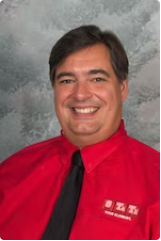
Gregory M. Ferrence
Professor, Inorganic Chemistry
B.S. 1991, Indiana University of Pennsylvania; Ph.D. 1996, Purdue University
Single-crystal small molecule X-ray crystallography is central to the research and scholarship in the Ferrence group. Projects range from ‘routine’ crystallography to examination of the structure of novel organic, metalorganic and organometallic compounds. Some projects focus on the unique structures of discrete molecules; other projects focus upon better understanding solid state intermolecular interactions in the context of crystal engineering; still others focus on utilization of crystallographic data in chemical education. We have examined structures of compounds containing main group, transition metal, lanthanide, and even actinide elements. We are actively investigating crystallographic aspects of quasiracemic mixtures of compounds. We are particularly interested in utilizing chemical information contained in the Cambridge Crystallographic Database to enhance students’ learning in chemistry coursework.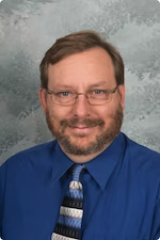
Christopher G. Hamaker
Associate Professor, Inorganic Chemistry
B.S. 1993, E. Michigan University; Ph.D. 1999, Iowa State University
Research in the Hamaker group is focused on coordination chemistry, catalysis, and crystal engineering. Our work bridges the traditional areas of organic and inorganic chemistry, with exposure to analytical techniques. Our first project is the development of novel ligands for coordination chemistry with possible environmental and catalytic applications. Our second project is the investigation of sulfonamides and their intermolecular interactions in the solid state using X-ray crystallography.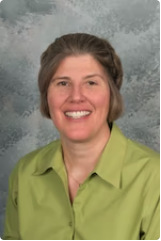
Lisa F. Szczepura
University Professor, Inorganic Chemistry
B.S. 1989 and Ph.D. 1994, State University of New York at Buffalo
Research in the Szczepura lab focuses on the chemistry of transition metal cluster complexes. We focus on coordinating new types of ligands to clusters of six metal atoms and subsequently study the reactivity and physical properties of the product complexes. All new complexes are fully characterized using various spectroscopic techniques (NMR, IR, UV-vis), as well as electrochemical and crystallographic techniques when suitable. Such fundamental studies on these supraoctahedral complexes are aimed at providing a better understanding of their chemistry in the hopes of one day designing new cluster complexes for specific applications, such as catalysis.Organic Chemistry
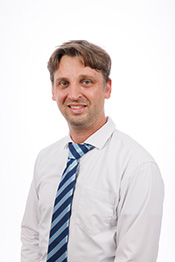
Patrick C. Hillesheim
Assistant Professor, Organic/Inorganic Chemistry
B.S. 2005, North Carolina State University; Ph.D. 2010, University of Florida
Have you ever wondered how the shape of a molecule dictates what a substance can do? That question drives our work. We focus on ionic liquids, salts that are liquid at (or near) room temperature. Because their ions exhibit both ionic and covalent character, these materials can be tailored for an astonishing range of uses, yet much about how they form and why they behave so uniquely is still unknown.
To unravel these mysteries, we design, synthesize, and study new ionic liquids which we make in our lab. We probe their behavior with advanced characterization techniques such as thermogravimetric analysis (TGA), differential scanning calorimetry (DSC), variable-temperature viscometry, and infrared spectroscopy. Pairing these experiments with theoretical modeling allows us not only to understand the data we collect but also to predict how yet-to-be-made compounds will perform.
We also employ single-crystal X-ray crystallography to capture molecular “snapshots” of how the ions pack together in the solid state. Combining these snapshots with computational analyses lets us map the web of non-covalent forces (hydrogen bonds, dispersion interactions, and subtle σ-hole contact) that hold the system together.
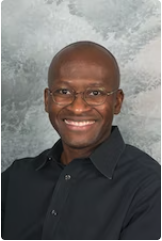
Shawn R. Hitchcock
Professor, Organic Chemistry
B.S. 1990, Wayne State University; Ph.D. 1995, University of California, Davis
Our research is focused on the development of heterocyclic compounds known as oxadiazinones in asymmetric organic synthesis. These compounds are hydrazino-homologs of the well-known oxazolidinone auxiliaries that have been successfully applied in reactions such as the aldol addition reaction, the Diels-Alder reaction, and conjugate addition. The presence of the additional nitrogen in the oxadiazinones allows for synthetic flexibility in designing these compounds as chiral auxiliaries or organocatalysts. We have employed these compounds as chiral auxiliaries in the asymmetric aldol addition reaction and the glycolate aldol addition reaction. Current targets in this work are arundic acid and a key fragment of hapalosin. In addition to these goals, our current efforts are focused on designing the oxadiazinones so that they can be used as organocatalysts. To this end, we are interested in pursuing organocatalytic transformations such as Friedel-Crafts alkylations, alpha-fluorination, and cycloaddition reactions to form isoxazolidines. We are also interested in extending the use of these compounds in the asymmetric Michael addition reaction to synthesized targets such rolipram, baclofen, and lyrica.
Timothy D. Lash
Distinguished Professor, Organic Chemistry
B.S. 1975, University of Exeter; M.Sc. 1977 and Ph.D. 1979, University College, Cardiff, Wales
The Lash laboratory is investigating the synthesis of porphyrins and related aromatic macrocycles. This work currently emphasizes the synthesis, characterization and reactivity of carbaporphyrins and structural analogues including azuliporphyrins, benziporphyrins, N-confused porphyrins and dicarbaporphyrinoids. These unique macrocyclic structures exhibit a broad range of characteristics and vary from nonaromatic to fully aromatic systems. Carbaporphyrinoids readily form stable organometallic complexes with Ni(II), Pd(II), Pt(II), Cu(III), Ag(III), Au(III), Rh(III) and Ir(III) and have the potential for applications in catalysis. Furthermore, novel regioselective oxidation reactions are being investigated and the resulting carbaporphyrin derivatives have been shown to exhibit valuable biological activity.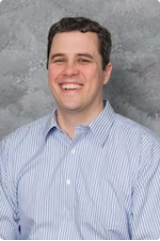
Andy Mitchell
Professor, Organic Chemistry
B.S., 2001, Grove City College (PA); Ph.D., 2008, Texas A&M University
The Mitchell research group is focused on the development of novel synthetic methods and the total synthesis of biologically active natural products. The methods focus of our group is cycloadditions, more specifically oxidopyrylium-alkene [5+2] cycloadditions toward bridged polycyclic ethers. Many fascinating natural products such as polygalolide, toxicodenane, and hedyosumin contain a bridged ether and are uniquely accessible via oxidopyrylium-alkene [5+2] cycloadditions. As we continue to develop synthetic methodology, we will apply these methods toward the total synthesis of natural products. Finally, both natural and unnatural molecules synthesized in our lab will be tested for biological activity.
Physical Chemistry

Susil Baral
Assistant Professor, Physical Chemistry
B.S. 2007, Tribhuvan University; M.S. 2009, Tribhuvan University; Ph.D. 2017, Ohio University
Research in our lab focuses on developing and applying single-molecule microscopy and spectroscopy techniques to understand the fundamental behavior of materials. In the first direction, we use magnetic tweezers microscopy to investigate the single-chain conformation and dynamics of the synthetic polymers to acquire knowledge for developing polymer materials with tailored mechanical properties. In the second direction, we use fluorescence microscopy to study the light-matter interactions in plasmonic nanoparticles to acquire knowledge for developing nanoscale materials with enhanced optical properties.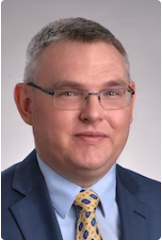
George L. Barnes
Professor and Chair, Physical/Computational Chemistry
B.S. 2003, University of Nevada, Reno; Ph.D. 2008, University of Wisconsin – Madison
Research in the Barnes group focuses on elucidating the dynamics of chemical reactions within tandem mass spectrometry. We examine collision-induced association of interesting chemical species and the soft-landing process on surfaces. Our molecular dynamics simulations reveal atomistic details concerning the reaction mechanism for fragmentation in these high-energy collision systems. Subsequent ab initio calculations provide information concerning activation energies for the observed reaction pathways. Our work has highlighted that proton motion and non-covalent complexes play a crucial role in the dynamics and the overall products formed during dissociation events.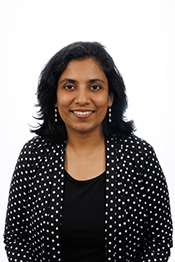
Puja Goyal
Assistant Professor, Physical & Computational Chemistry
B.S. 2006, Calcutta University; M.S. 2008, Indian Institute of Technology; Ph.D. 2013, University of Winsconsin - Madison
The Goyal Research Group is a computational chemistry research group interested in solving problems at the interface of chemistry, materials science, and biology. We employ the tools of computational chemistry to obtain mechanistic insights into chemical and biological systems that harvest light to regulate vital physiological processes and subsequently design novel systems with properties tailored for specific applications. We also study charge transport in organic quinone crystals in the context of environment-friendly aqueous rechargeable batteries.